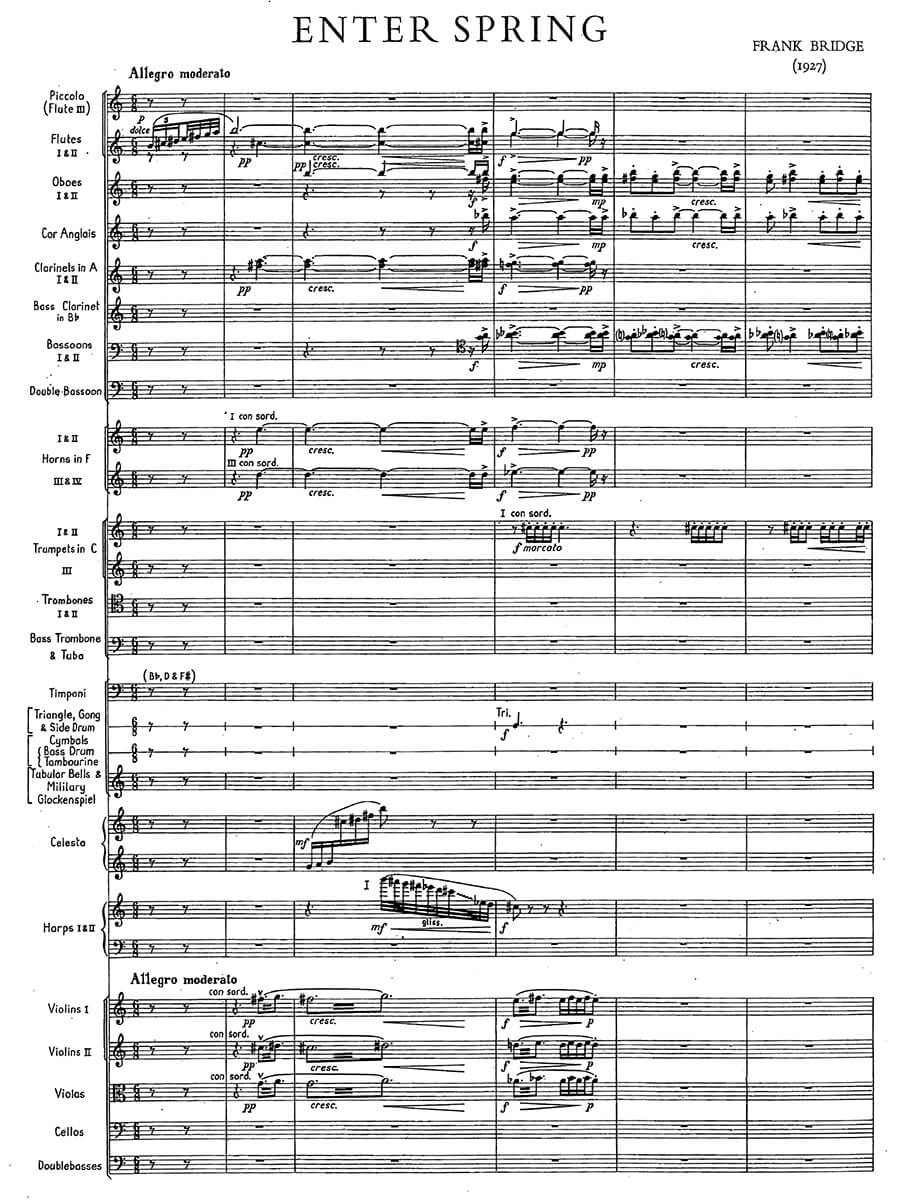Enter Spring for orchestra
Bridge, Frank
24,00 €
Preface
Frank Bridge – Enter Spring
(b. Brighton, 26. February 1879 – d. Eastbourne, 10. January 1941)
(first performed at the Norfolk and Norwich Festival 27. October 1927)
Preface
The music of Frank Bridge is finally receiving its due in his native country. On his death in 1941 Herbert Howells wrote an article in Music and Letters which started off by emphasising the many-sided nature of Bridge as violist, chamber musician, conductor, composer and teacher – most notably of Benjamin Britten. Thereafter occasional overviews appeared in journals, particularly those by Paul Hindmarsh, and Anthony Payne – who would develop and extend his research into a short book Frank Bridge – radical and conservative (London: Thames Publishing, 1999). The first full-length treatment of the composer and his works was published as recently as 2015 – The Music of Frank Bridge by Fabian Huss (Woodbridge: Boydell Press). Most of his output has now been recorded with help and pressure from The Frank Bridge Trust: Mark Bebbington has tackled the complete piano oeuvre while the late Richard Hickox did sterling work in committing the orchestral works to CD. At last it seems as if this fascinating figure may be placed in the pantheon of the greats of British music.
Bridge studied violin and composition at the Royal College of Music, where classes with Stanford fired his enthusiasm and imagination. He quickly established his professional reputation as a chamber musician, deputising for the indisposed Emanuel Wirth in the Joachim Quartet, and then as a regular member of the English String Quartet. He was much in demand as a conductor in the years before the First World War, taking charge of performances by the New Symphony Orchestra, the London Symphony Orchestra, and directing in the pits of the Savoy Theatre and Covent Garden. Bridge’s early compositions bear the imprint of the Stanford-Brahms idiom, and yet works such as the Phantasie Quartet (1910) and the G minor String Quartet (1915) highlight a desire to develop away from his models. The peak of his ‘first style’ can be appreciated in the four-movement suite The Sea (1910-11) which was received with great approbation at its first Proms performance, some commentators even dubbing it the English La Mer. If works such as the orchestral Summer (1914) show an increased chromaticism and an almost ‘Delian Englishness’ (Anthony Payne) it is the Piano Sonata (1921-4) that marked a change to a second compositional phase. The horrors of the First World War had made a deep impact upon the composer. He turned inwards to confront more intractable problems than merely writing publicly effective music. Howells sums up this ‘new style’: ‘Shape and build of melodic line were altered; the ease of fourth, fifth or sixth gave place to emphasis on the major seventh. Balanced sentences were broken up, melodic lengths were reduced. Preponderance of augmented intervals over minor, major and perfect removed the whole implications of major and minor triads and their inversions. The fringes of polytonality were touched but the severities of the theory of atonality were scarcely approached.’ The stream of masterpieces that followed the Piano Sonata included the Piano Trio no. 2, the Third and Fourth Quartets, the orchestral There is a Willow grows aslant a brook, Enter Spring, and Oration. His last orchestral work Rebus (1940) shows a return to a less complicated harmonic style while retaining the composer’s characteristic vitality and lyricism.
Read full preface > HERE
Score Data
| Genre | Orchestra |
|---|---|
| Size | 225 x 320 mm |
| Printing | Reprint |
| Pages | 76 |
